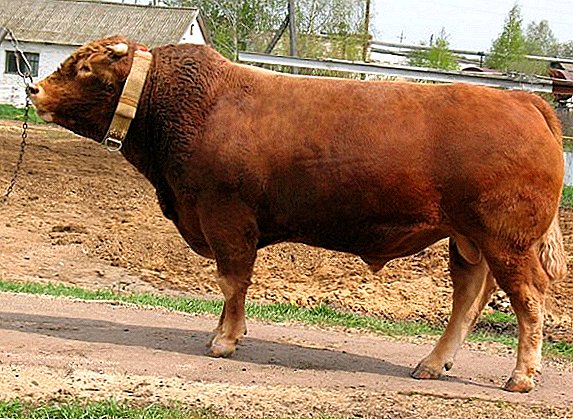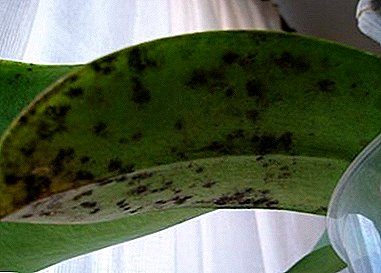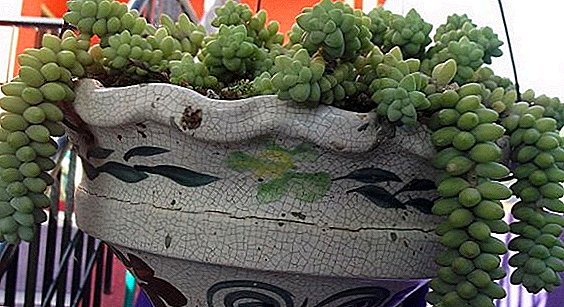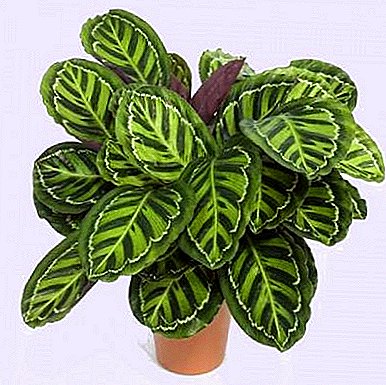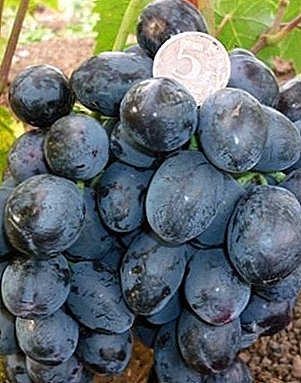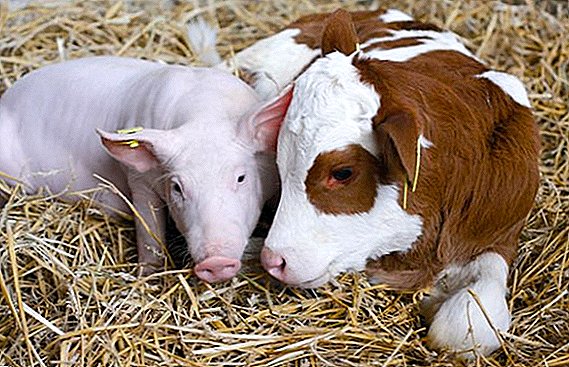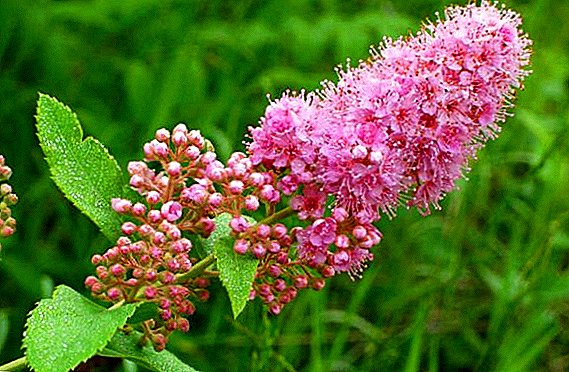 Spiraea is a beautiful and unpretentious ornamental plant. Its large and at the same time graceful bushes will be an excellent decoration of the site not only for a professional gardener, but also for amateur beginner. And all because the gray spirea does not require too complex activities during planting and care.
Spiraea is a beautiful and unpretentious ornamental plant. Its large and at the same time graceful bushes will be an excellent decoration of the site not only for a professional gardener, but also for amateur beginner. And all because the gray spirea does not require too complex activities during planting and care.
Description
The spirea is ivolist or, as it is also called, the gray spirea belongs to deciduous shrubs and reaches a height of up to two meters. The plant received its first name because of the shape of its foliage. The leaves have a pointed shape and reach a length of up to ten centimeters.  From above they are painted darker than the bottom. The branches of the gray spirea grow straight up. The bush grows very quickly due to the large number of root growths.
From above they are painted darker than the bottom. The branches of the gray spirea grow straight up. The bush grows very quickly due to the large number of root growths.
This species is especially appreciated for the beauty of its bloom. Its color is described in a huge variety: purple, pink, burgundy, garnet and many other shades of red. There are also bushes with white color.
Find out about such representatives of the spirea as spiraea birch, spirea white, spiraeus Bumald, spirea Grefshaym, spirea Wangutta.The inflorescence itself consists of many small flowers with yellow pedicels, collected in the form of the so-called "panicle". They can reach up to twenty-five centimeters in length and have a pleasant fluffy look. Gray spirea begins to bloom in the fourth year after planting.
In the wild, this plant is distributed throughout Eurasia, as well as partly in North America. It grows in swamps, near water bodies, but can also be found on fields or in thickets of other bushes.  Broths and infusions from different parts of the plant are used in traditional medicine for the treatment of diarrhea, intestinal candidiasis, rheumatism.
Broths and infusions from different parts of the plant are used in traditional medicine for the treatment of diarrhea, intestinal candidiasis, rheumatism.
Did you know? In Greek, "spirea" means "the one that bends."
Landing
Two seasons, spring and autumn, are suitable for planting gray spirea. In the first case, the plant should be planted before the appearance of buds on the seedling. In the second - only after the fall of the foliage. Place for planting should be open and sunny.
It is best to use bushes for group planting.
Gray spiraea is not too whimsical to the conditions of planting and care, but there are certain points that must be observed to ensure good growth and health of the plant. First of all, it is best to plant it in rainy weather. 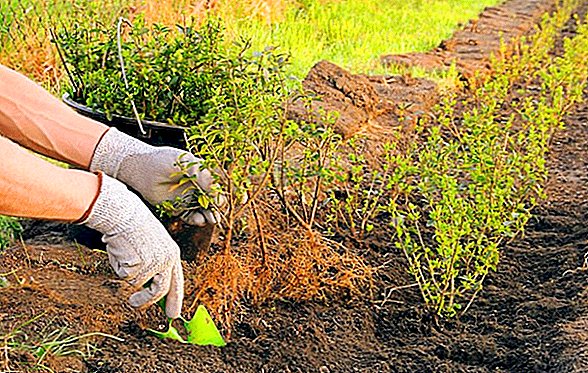 This plant is very moisture-loving and immediately after planting the seedling must be watered using at least thirty liters of water. But this is only if they plant a bush in the spring. If in the fall, the young spiraeus must be covered for the winter from the cold.
This plant is very moisture-loving and immediately after planting the seedling must be watered using at least thirty liters of water. But this is only if they plant a bush in the spring. If in the fall, the young spiraeus must be covered for the winter from the cold.
The hole for planting should be larger than the diameter of the roots, then the plant will grow better. Spiraea gray has no special requirements for the composition or quality of the soil, the main thing is that it should be fresh and moist.
But, if the soil for planting is too clay, it is necessary to make a drainage for water from sand and fine gravel.
Did you know? Leonardo da Vinci argued that the square of the diameter of the trunk of any tree is equal to the sum of the squares of the diameters of the branches, taken at a total fixed height. Modern calculations have confirmed the correctness of the great thinker with minor clarifications.
Breeding
Propagation of gray spirea can be done in two ways: by planting seeds or grafting.  The first method is simpler and does not require any difficult measures. First you need to collect the seed boxes from the bush, while they are not open yet and do not have a brown color. Do it better at the end of the summer.
The first method is simpler and does not require any difficult measures. First you need to collect the seed boxes from the bush, while they are not open yet and do not have a brown color. Do it better at the end of the summer.
Literally in two weeks the boxes ripen and open. The resulting seeds do not require additional processing and are ready for planting. Pre-seed is better for three months to put in a special soil, distributed in boxes.
The cuttings also breed laurel, orchid, thuja, fuchsia, plumeria, currants, Campsis, fir, heather, zamiokulkas, geranium.And after the appearance of sprouts, the plant can be planted in open ground.
Propagation by cuttings gives a slightly higher success rate for survival, but also requires great effort. It should begin in mid-summer or early autumn. Best of all for cuttings are suitable young shoots aged no more than a year, growing almost vertically upwards.  They need to be cut, leaving about five leaves on each cutting. The resulting cuttings for the night should be soaked in a special solution "Epin" in the ratio of one milliliter per two liters of water. Next, the cuttings are planted in wet sand at an acute angle.
They need to be cut, leaving about five leaves on each cutting. The resulting cuttings for the night should be soaked in a special solution "Epin" in the ratio of one milliliter per two liters of water. Next, the cuttings are planted in wet sand at an acute angle.
After that, they should be covered with a film or a glass cap and spray regularly. Young seedlings should be in a shady place. For the winter, it is necessary to sprinkle it with fallen leaves, and then plant in the spring when the first shoots appear.
Care
Gray spirea is quite undemanding in its care. It consists in regular watering, feeding and periodic cutting of the bush.
Watering
Spiraea Ivistina requires moderate watering. It is necessary to increase its volume only in the dry period. At this time, every bush needs about fifteen liters of water a week. 
Top dressing
The best time to fertilize a plant is spring before the spirea begins to bloom. To do this, mix a bucket of manure in five buckets of water. In each bucket of the resulting mixture will need to add from five to ten grams of superphosphates.
To prevent weeds, the soil around the shrub should be mulched with humus, peat or wood chips.
Pruning
Regular cutting of branches of gray spirea is required not only to care for the appearance of the crown, but also for better flowering of the shrub. Pruning should be in early spring to the plant had time to recover before summer flowering.
Important! During the summer, faded inflorescences need to be cut to improve the formation of seed boxes.At the same time, it is necessary to remove small shoots, and shorten all the rest to developed buds.

Diseases and pests
The main pests for willow spiraea are aphid, rosaceous miner, pink rosette, spider mite, and slugs. To combat them, you can use not only chemical, but also biological and agrotechnical methods.
Even regular watering and fertilizing the bushes help protect against diseases and pests. It also helps to maintain order and cleanliness in the garden and on the site around.
Aphid, miner and leafworm can be successfully destroyed by introducing a pyrimor solution into the soil. And the treatment of a plant with phosphamide, metaphos, fosalon, etc. will help to get rid of spider mites.
In turn, the most elementary way to get rid of slugs from your plants is to spray them with coffee solution.  Any preventive treatment should be carried out before the first leaves appear on the bush. These procedures are performed every spring and autumn. In general, the bush rarely receives serious damage from pests and usually does not lose its decorative appearance.
Any preventive treatment should be carried out before the first leaves appear on the bush. These procedures are performed every spring and autumn. In general, the bush rarely receives serious damage from pests and usually does not lose its decorative appearance.
Did you know? Of the total variety of plant species for humans, only less than a third of them are edible.
So, we learned that the ivolist or gray spirea is an amazing plant. She not only has an attractive appearance, but is also not whimsical to the conditions of planting and care, and even has recognized healing qualities. So, this shrub is fully worthy of becoming an ornament to your garden.


